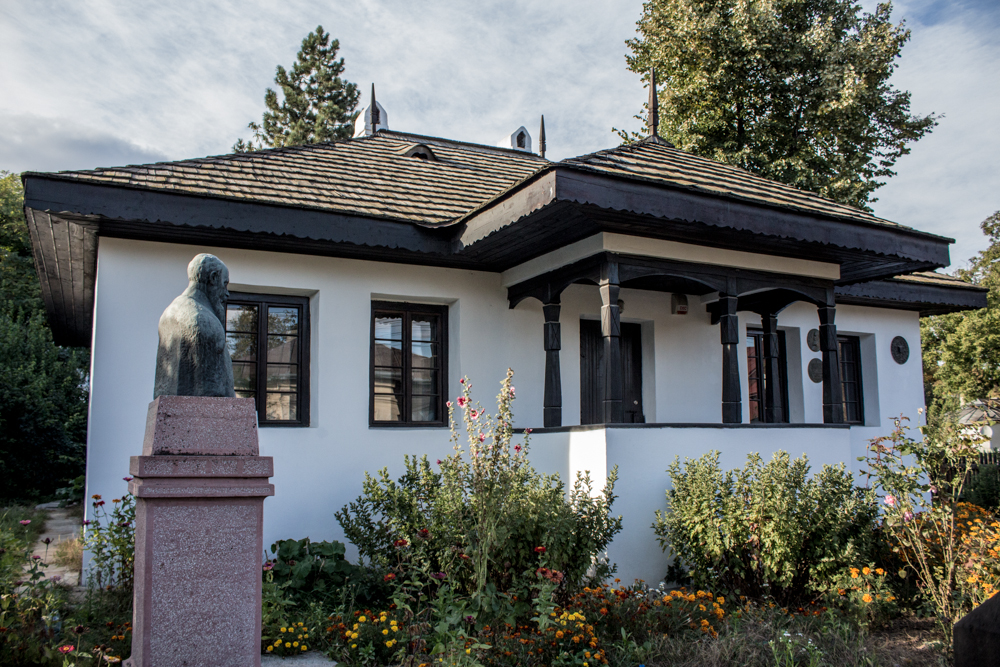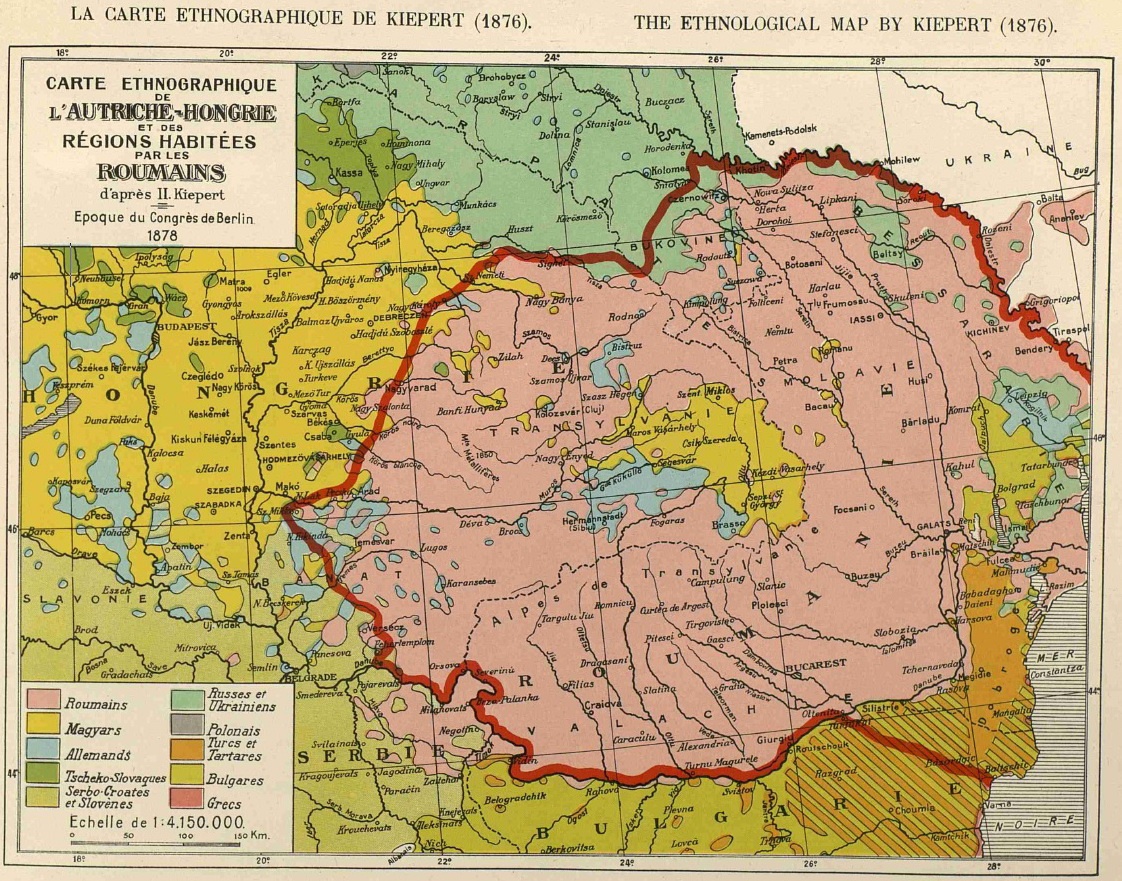|
George Vâlsan
George Vâlsan (January 22, 1885 – August 6, 1935) was a Romanian geographer and writer. Biography Education and career Born in Bucharest, he attended primary school in Iași and Craiova, and began high school in Pitești. He completed secondary education at the Gheorghe Lazăr High School in Bucharest, graduating in 1904. He then attended the Faculty of Letters and Philosophy at the University of Bucharest, obtaining his diploma in 1908. Encouraged by Titu Maiorescu and Simion Mehedinți, he continued his studies of geography in Berlin and, under Emmanuel de Martonne, in Paris. After returning home, Vâlsan taught high school in Târgu Jiu and Bucharest from 1909 to 1915.Călinescu, p. 494 In 1916 he obtained a doctorate from the University of Bucharest; his was the first Ph.D. in Geography awarded in Romania. He was then assistant professor at the University of Iași, where he taught geography. In January 1917 he was seriously injured in the Ciurea rail disaster, which lef ... [...More Info...] [...Related Items...] OR: [Wikipedia] [Google] [Baidu] |
George Valsan
George may refer to: People * George (given name) * George (surname) * George (singer), American-Canadian singer George Nozuka, known by the mononym George * George Washington, First President of the United States * George W. Bush, 43rd President of the United States * George H. W. Bush, 41st President of the United States * George V, King of Great Britain, Ireland, the British Dominions and Emperor of India from 1910-1936 * George VI, King of Great Britain, Ireland, the British Dominions and Emperor of India from 1936-1952 * Prince George of Wales * George Papagheorghe also known as Jorge / GEØRGE * George, stage name of Giorgio Moroder * George Harrison, an English musician and singer-songwriter Places South Africa * George, Western Cape ** George Airport United States * George, Iowa * George, Missouri * George, Washington * George County, Mississippi * George Air Force Base, a former U.S. Air Force base located in California Characters * George (Peppa Pig), a 2-year-old pig ... [...More Info...] [...Related Items...] OR: [Wikipedia] [Google] [Baidu] |
Romanian Athenaeum
The Romanian Athenaeum ( ro, Ateneul Român) is a concert hall in the center of Bucharest, Romania, and a landmark of the Romanian capital city. Opened in 1888, the ornate, domed, circular building is the city's most prestigious concert hall and home of the "George Enescu" Philharmonic and of the George Enescu Festival. History In 1865, cultural and scientific personalities such as Constantin Esarcu, V. A. Urechia, and Nicolae Creţulescu founded the Romanian Atheneum Cultural Society. To serve its purposes, the Romanian Athenaeum, a building dedicated to art and science, would be erected in Bucharest. The building was designed by the French architect Albert Galleron, built on a property that had belonged to the Văcărescu family and inaugurated in 1888, although work continued until 1897. A portion of the construction funds was raised by public subscription in a 28-year-long effort, of which the slogan is still remembered today: "Donate one '' leu'' for the ''Ateneu ... [...More Info...] [...Related Items...] OR: [Wikipedia] [Google] [Baidu] |
Nicolae Iorga
Nicolae Iorga (; sometimes Neculai Iorga, Nicolas Jorga, Nicolai Jorga or Nicola Jorga, born Nicu N. Iorga;Iova, p. xxvii. 17 January 1871 – 27 November 1940) was a Romanian historian, politician, literary critic, memoirist, Albanologist, poet and playwright. Co-founder (in 1910) of the Democratic Nationalist Party (PND), he served as a member of Parliament, President of the Deputies' Assembly and Senate, cabinet minister and briefly (1931–32) as Prime Minister. A child prodigy, polymath and polyglot, Iorga produced an unusually large body of scholarly works, establishing his international reputation as a medievalist, Byzantinist, Latinist, Slavist, art historian and philosopher of history. Holding teaching positions at the University of Bucharest, the University of Paris and several other academic institutions, Iorga was founder of the International Congress of Byzantine Studies and the Institute of South-East European Studies (ISSEE). His activity also included the transf ... [...More Info...] [...Related Items...] OR: [Wikipedia] [Google] [Baidu] |
Convorbiri Literare
''Convorbiri Literare'' (Romanian: ''Literary Talks'') is a Romanian literary magazine published in Romania. It is among the most important journals of the nineteenth-century Romania. History and profile ''Convorbiri Literare'' was founded by Titu Maiorescu in 1867. The magazine was the organ of the Junimea group, a literary society which was established in 1864. The group included aristocratic Moldovans except for Titu Maiorescu. The magazine was first headquartered in Iaşi and later moved to Bucharest. ''Convorbiri Literare'' is published monthly by Convorbiri Literare publishing house. The magazine covered art reviews and translations of literary work. From 1906 the magazine also featured articles on plastic arts. The contributors included Alexandru Tzigara-Samurcaș and Apcar Baltazar among others. The other significant contributors were Mihai Eminescu, Ion Creangă and Ion Luca Caragiale. ''Convorbiri Literare'' has a conservative stance, and its literary rival was socia ... [...More Info...] [...Related Items...] OR: [Wikipedia] [Google] [Baidu] |
Sămănătorul
''Sămănătorul'' or ''Semănătorul'' (, Romanian for "The Sower") was a literary and political magazine published in Romania between 1901 and 1910. Founded by poets Alexandru Vlahuță and George Coșbuc, it is primarily remembered as a tribune for early 20th century traditionalism, neoromanticism and ethnic nationalism. The magazine's ideology, commonly known as ''Sămănătorism'' or ''Semănătorism'', was articulated after 1905, when historian and literary theorist Nicolae Iorga became editor in chief. While its populism, critique of capitalism and emphasis on peasant society separated it from other conservative groups, ''Sămănătorul'' shared views with its main conservative predecessor, the ''Junimea'' society, particularly in expressing reserve toward Westernization. In parallel, its right-wing agenda made it stand in contrast to the Poporanists, a Romanian populist faction whose socialist-inspired ideology also opposed rapid urbanization, but there was a significant ov ... [...More Info...] [...Related Items...] OR: [Wikipedia] [Google] [Baidu] |
Dimitrie Cantemir
Dimitrie or Demetrius Cantemir (, russian: Дмитрий Кантемир; 26 October 1673 – 21 August 1723), also known by other spellings, was a Romanian prince, statesman, and man of letters, regarded as one of the most significant early Enlightenment figures. He twice served as voivode of Moldavia (March–April 1693 and 1710–1711). During his second term he allied his state with Russia in a war against Moldavia's Ottoman overlords; Russia's defeat forced Cantemir's family into exile and the replacement of the native voivodes by Greek phanariots. Cantemir was also a prolific writer, variously a philosopher, historian, composer, musicologist, linguist, ethnographer, and geographer. His son Antioch, Russia's ambassador to Great Britain and France and a friend of Montesquieu and Voltaire, would become known as "the father of Russian poetry". Name Dimitrie is the Romanian form of the name Latinized as Demetrius and, less often, anglicized as Demeter. The Russian f ... [...More Info...] [...Related Items...] OR: [Wikipedia] [Google] [Baidu] |
Romanians Of Serbia
Romanians ( ro, Românii din Serbia, sr, Румуни у Србији, Rumuni u Srbiji) are a recognised national minority in Serbia. The total number of self-declared Romanians according to the 2011 census was 29,332, while 35,330 people declared themselves Vlachs; there are differing views among some of the Vlachs over whether they should be regarded as Romanians or as members of a distinctive nationality. Declared Romanians are mostly concentrated in Banat, in Vojvodina, while declared Vlachs are mostly concentrated in the Timok Valley, in eastern Serbia. History As Daco-Romanian-speakers, the Vlachs have a connection to Roman heritage in Serbia. Following Roman withdrawal from the province of Dacia at the end of the 3rd century, the name of the Roman region was changed to Dacia Aureliana, and (later Dacia Ripensis) spread over most of what is now called Serbia and Bulgaria, and an undetermined number of Romanized Dacians (Carpi) were settled there. Strong Roman presence ... [...More Info...] [...Related Items...] OR: [Wikipedia] [Google] [Baidu] |
George Giuglea
George Giuglea (January 29, 1884 – April 7, 1967) was an Austro-Hungarian-born Romanian linguist and philologist. Biography Origins and education He was born in Satulung, a village that today is incorporated into Săcele city, close to Brașov in southeast Transylvania. The family were shepherds, and Giuglea's childhood was divided between his native village and Roseți, Călărași County, in the Romanian Old Kingdom. Like other local shepherds, his parents would leave their mountainous home and cross the border, taking their sheep to spend the winter on the plains, in a warmer climate, close to the Danube. Giuglea attended Andrei Șaguna High School in Brașov, followed by the literature and philosophy faculty of the University of Bucharest in the Romanian capital. His professors included Titu Maiorescu, Nicolae Iorga, Ioan Bianu, Dimitrie Onciul and Simion Mehedinți. Ovid Densusianu was particularly influential for the student, who would compose an evocative obituary for ... [...More Info...] [...Related Items...] OR: [Wikipedia] [Google] [Baidu] |
Bucegi Mountains
The Bucegi Mountains (Romanian: ''Munții Bucegi'' ) are located in central Romania, south of the city of Brașov. They are part of the Southern Carpathians group of the Carpathian Mountains. At , '' Omu'' is its highest point. To the east, the Bucegi Mountains have a very steep slope towards the popular tourist destinations in the Prahova Valley, such as Bușteni and Sinaia. At a higher elevation is the Bucegi Plateau, where wind and rain have turned the rocks into spectacular figures such as the Sphinx and ''Babele''. The Bucegi is believed to be the Dacian holy mountain ''Kogainon'', on which the God Zalmoxis resided in a cave. Name The exact origin of the name "Bucegi" is disputed by philologists. "Buceag" or "bugeac" seems to be the source of the name, a word designating in the language of mountain people both the moss in the forest and the wilderness or the junipers. An archaic version of the name "Bucegi" is "Buceci", name still used today by elders in the mountains, and ... [...More Info...] [...Related Items...] OR: [Wikipedia] [Google] [Baidu] |
Southern Dobruja
Southern Dobruja, South Dobruja or Quadrilateral (Bulgarian: Южна Добруджа, ''Yuzhna Dobrudzha'' or simply Добруджа, ''Dobrudzha''; ro, Dobrogea de Sud, or ) is an area of northeastern Bulgaria comprising Dobrich and Silistra provinces, part of the historical region of Dobruja. It has an area of 7,566 km² and a population of 358,000. It was a part of Romania ''de jure'' from 1913 to 1918 (''de facto'' from 1913 to 1916) and again from 1919 to 1940. History At the beginning of the modern era, Southern Dobruja had a mixed population of Bulgarians and Turks with several smaller minorities, including Gagauz, Crimean Tatars and Romanians. In 1910, of the 282,007 inhabitants of Southern Dobruja, 134,355 (47.6%) were Bulgarians, 106,568 (37.8%) Turks, 12,192 (4.3%) Roma, 11,718 (4.1%) Tatars, and 6,484 (2.4%) Romanians. Southern Dobruja was part of the autonomous Bulgarian principality from 1878 and part of the independent Bulgarian state from 1908 until Bulgari ... [...More Info...] [...Related Items...] OR: [Wikipedia] [Google] [Baidu] |





